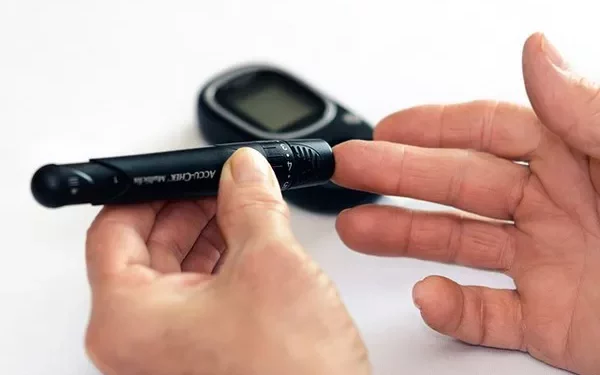Monitoring blood glucose levels is a critical aspect of diabetes management. For individuals with diabetes or those at risk of developing it, understanding what constitutes a normal glucose level, particularly in the morning, is essential. This article will delve into the significance of morning glucose levels, factors affecting them, and guidelines for maintaining healthy levels.
Understanding Blood Glucose Levels
Blood glucose, or blood sugar, is the amount of glucose present in the bloodstream. Glucose is a primary energy source for the body and is derived from the foods we consume, particularly carbohydrates. The body regulates blood glucose levels through insulin, a hormone produced by the pancreas. Insulin allows cells to absorb glucose, which lowers blood sugar levels.
Normal Glucose Levels
Normal blood glucose levels vary throughout the day and depend on factors such as food intake, physical activity, and overall health. The American Diabetes Association (ADA) provides the following guidelines for blood glucose levels:
Fasting (no food for at least 8 hours):
Normal: Less than 100 mg/dL (5.6 mmol/L)
Prediabetes: 100–125 mg/dL (5.6–6.9 mmol/L)
Diabetes: 126 mg/dL (7 mmol/L) or higher
Postprandial (2 hours after eating):
Normal: Less than 140 mg/dL (7.8 mmol/L)
Prediabetes: 140–199 mg/dL (7.8–11.0 mmol/L)
Diabetes: 200 mg/dL (11.1 mmol/L) or higher
Random testing:
Diabetes: 200 mg/dL (11.1 mmol/L) or higher, along with symptoms of hyperglycemia.
Morning Glucose Levels: Why They Matter
Monitoring glucose levels in the morning, particularly upon waking, is crucial for several reasons:
Basal Insulin Needs: Morning glucose levels reflect the body’s baseline insulin needs. Individuals with diabetes need to understand their baseline levels to manage insulin therapy effectively.
Dawn Phenomenon: Many individuals experience the dawn phenomenon, where blood sugar levels rise in the early morning hours due to hormonal changes. This phenomenon can cause higher morning glucose levels even in well-managed individuals.
Assessment of Overnight Management: Morning glucose readings can help evaluate how well blood sugar levels were managed overnight. Elevated levels may indicate inadequate diabetes management, dietary choices, or medication adjustments needed.
Predictive Indicator: Morning glucose levels can serve as an early warning system for potential complications if consistently high. This can prompt timely interventions to prevent further health issues.
Factors Affecting Morning Glucose Levels
Several factors can influence morning glucose levels:
1. Diet
Diet plays a significant role in determining morning glucose levels. Foods consumed in the evening, particularly those high in carbohydrates, can affect blood sugar overnight. A heavy, carbohydrate-rich dinner can lead to elevated fasting blood glucose levels in the morning.
2. Physical Activity
Physical activity helps improve insulin sensitivity and can lower blood glucose levels. Conversely, a sedentary lifestyle may contribute to higher glucose levels in the morning. Engaging in regular physical activity can lead to better overall blood sugar control.
3. Hormones
Hormonal fluctuations, particularly cortisol and glucagon, can impact morning glucose levels. Cortisol, known as the stress hormone, typically peaks in the early morning, potentially causing increased blood sugar levels.
4. Medications
For individuals with diabetes, medication types and dosages can significantly affect morning glucose readings. Some medications, such as insulin or oral hypoglycemics, are designed to lower blood sugar levels and can impact fasting glucose levels depending on the timing and administration.
5. Sleep Quality
Poor sleep quality or sleep disorders, such as sleep apnea, can negatively affect insulin sensitivity and blood glucose control. Individuals with inadequate or disrupted sleep may experience higher glucose levels in the morning.
6. Stress
Physical or emotional stress can lead to increased blood glucose levels. Stress hormones can counteract insulin’s effects, resulting in elevated glucose levels, particularly in the morning after a stressful day.
7. Illness
Infection or illness can trigger hormonal responses that raise blood glucose levels. This physiological response can lead to elevated fasting glucose levels during recovery periods.
Target Glucose Levels in the Morning
Establishing target glucose levels in the morning is essential for managing diabetes effectively. The recommended fasting glucose levels are as follows:
Normal: Less than 100 mg/dL (5.6 mmol/L)
Prediabetes: 100–125 mg/dL (5.6–6.9 mmol/L)
Diabetes: 126 mg/dL (7 mmol/L) or higher
For individuals with diabetes, the goal is typically to maintain fasting glucose levels below 130 mg/dL (7.2 mmol/L). These targets may vary based on individual health factors, age, and treatment plans.
Managing High Morning Glucose Levels
If morning glucose levels are consistently elevated, it may be necessary to implement changes to improve blood sugar control. Here are strategies to manage high morning glucose levels:
1. Dietary Adjustments
Balanced Evening Meals: Focus on consuming balanced meals with a combination of protein, healthy fats, and complex carbohydrates. Avoid heavy, carbohydrate-rich dinners that may contribute to elevated morning glucose levels.
Limit Sugary Snacks: Minimize evening snacking, especially on sugary or high-carb foods that can affect overnight glucose levels.
Consider Evening Snacks: For some individuals, a small evening snack with protein and healthy fat can help stabilize overnight blood sugar levels.
2. Exercise Regularly
Incorporating regular physical activity into daily routines can improve insulin sensitivity and help regulate blood glucose levels. Aim for at least 150 minutes of moderate exercise each week. Activities may include walking, cycling, swimming, or strength training.
3. Monitor Blood Glucose Regularly
Regular blood glucose monitoring is crucial for understanding how diet, exercise, and medication affect blood sugar levels. Monitoring fasting glucose levels can help identify patterns and triggers for elevated levels.
4. Evaluate Medication Regimen
Consult with a healthcare provider to review medication regimens. Adjustments may be needed to ensure adequate blood sugar control overnight. This may include changes in insulin types, dosages, or administration times.
5. Manage Stress Levels
Implement stress management techniques such as mindfulness, meditation, yoga, or deep breathing exercises. Reducing stress can help lower cortisol levels and improve overall blood glucose control.
6. Prioritize Sleep Quality
Focus on improving sleep hygiene by establishing a regular sleep schedule, creating a restful environment, and minimizing screen time before bed. Quality sleep can enhance insulin sensitivity and stabilize blood glucose levels.
7. Seek Professional Guidance
If persistent high morning glucose levels are a concern, consult with a healthcare provider or a registered dietitian. They can provide tailored recommendations and support for managing diabetes effectively.
See also: What is the Normal Capillary Blood Glucose Level?
Conclusion
Understanding what constitutes a healthy glucose level in the morning is vital for effective diabetes management. Maintaining fasting glucose levels within the target range can help prevent complications and promote overall health.
By considering factors that influence blood glucose levels, implementing dietary adjustments, and incorporating regular physical activity, individuals can work towards better blood sugar control. Regular monitoring and consultation with healthcare professionals are essential components of a successful diabetes management plan. With the right strategies, it is possible to maintain healthy morning glucose levels and improve overall well-being.
Related topics:
What Is a Normal Average Daily Blood Sugar?



























